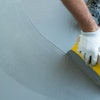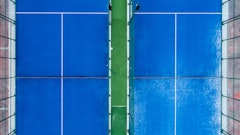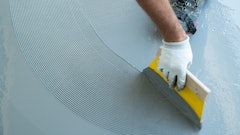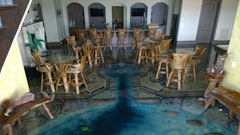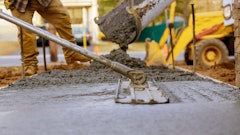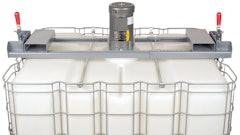Plain gray concrete is a terrific product for many applications, but when your customers want something different, decorative concrete could be the answer. If you’ve never done any decorative installations, getting training to find out how it works will make your job much easier.
While it is possible to learn decorative concrete methods on your own, it could take many years to become adept, says The Stamp Store’s Doug Bannister. “In the meantime, there’s a lot of money lost,” he says. “We hope to provide contractors a way to hit the job running, get fully paid for their work and develop a strong referral base. This training will eliminate all basic mistakes and give contractors some very sophisticated techniques, which have come out only in the last year or two.”
“Concrete contractors benefit from specialized training because it broadens the scope of the creative work they perform,” notes Scott Thorne of L.M. Scofield Company. “That leads to providing added--value service to their customers. Special training ensures that contractors learn the proper techniques needed for creating successful decorative concrete products. By using decorative materials, the concrete surface is altered, and the work must be done correctly to provide for integrity and longevity of the wear surface. If the materials are not used correctly, the durability of the surface can be compromised.”
“Why not take a class that’s going to teach you more?” Janine Lutz of SuperStone asks. “In any field, you want to be the best you can be. There’s so much competition out there. Decorative concrete is limitless, so why not get as much information as you can? If contractors want repeat business, they need to do a good job. The course will teach them the tricks of the trade.”
What Is Offered
While there are no formal prerequisites, contractors need at least two years of experience working with plain concrete to get the most benefit from decorative concrete training. Decorative concrete classes incorporate both interior and exterior applications and offer hands--on experience in working with the materials and special tools. Subjects covered include working with freshly poured concrete, including stamped and stenciled concrete; admixtures; mix designs and step retardation; cast--in--place concrete countertops; self--leveling materials; sealers; vertical applications; and overlay systems for existing concrete, including microtoppings and stamped overlays. Techniques to change or add color include antiquing, acid stains, waterborne stains, washes, dyes and tints.
Some courses also cover marketing techniques and problem prevention. “It’s better to make a mistake in the learning environment of a workshop than on a job site,” Thorne says. “Our training courses allow contractors to receive coaching on how to prevent or rectify possible mistakes made on a job. Sometimes the difference between getting paid or having a job claim can come from understanding the most proficient methods.”
The Stamp Store includes all topics in its two--and--a--half--day classes, while SuperStone covers them in two or three days of training. Increte Systems offers a two--day flatwork course and a one--day architectural wall course. The Scofield Institute offers one-- and two--day exteriors classes, a two--day advanced exteriors class, two--day interiors classes, and one--half-- to one--day courses on reactive stains and resurfacing.
Course instructors have extensive experience in decorative concrete work, and many hold American Concrete Institute certification. Although each company features its own products in its classes, the knowledge gained can be applied when using any brand.
What It Costs
Increte Systems charges $500 per company for two participants for its two--day course, with a $100 fee for each additional participant from the same company. The one--day course is $250 per person. Seminar fees can be applied to purchases of their product packages, which start at $7,900 and are only sold to course graduates.
The Stamp Store’s course fee is $650. Each student gets a 2--inch--thick binder of educational materials they can take to the job site. Repeat students get tuition discounts. Retaking the course later is beneficial because products and technologies involved are upgraded constantly. Students are offered a 10--percent discount on materials purchases for the first week after they complete the class and a 5--percent discount thereafter. Fees for the Scofield Institute are based on the location and length of the workshop.
SuperStone’s courses, which include lunch, a T--shirt and a hat, cost $250 each for the first two people from a company and $200 for each additional person. No product discounts are offered. SuperStone also offers four different 20--minute training videos for $10 each, which provide good introductions to the material covered in the classes.
The Bottom Line
Contractors who complete training use their new knowledge to expand the decorative part of their concrete businesses, Bannister says. That means making more money.
“Our most successful contractors are small to medium guys who have found their niche,” says Mike Lowe Jr. of Increte Systems. “Maybe before taking the course, their total revenues were $100,00 to $200,000 per year. Now that they’ve gone decorative, they're netting $400,000 per year. Our motto is ‘pour half the concrete, double your profits.’ When we introduce texture and color into concrete, it stops being a commodity and becomes more of an art form, and then they can charge more.”
Jean Feingold is a Gainesville, Florida--based freelance writer who frequently reports on concrete--related topics and other construction--industry issues.


